22 Feb 2008
In early February I got to go on a day trip to the South Pole. The Pole is supplied almost entirely by ski-mounted LC-130s. They carry food, building materials, fuel, and everything else needed for the South Pole Station to survive. Any fuel transported down is stored in the wing tanks of the LC-130s, which run off the same fuel (AN-8) as the entire South Pole Station. Each fuel run can only transport about 3,000 gallons, which weighs more than 10 tons, but the LC-130s still have room for a little cargo on each fuel run, and when they are finished transporting cargo they will let McMurdo residents bum a ride. It's a lottery system to get on these flights, and I got lucky. I took all the following photos, and I release them to the public domain.
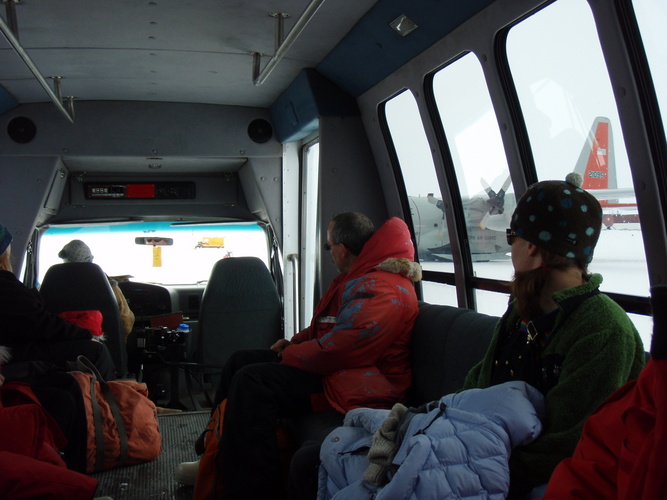
My flight was a night flight, but of course you can't tell from the photos because it's still light all day long. The LC-130s operate out of Willy Field here at McMurdo, our one field that supports ski-equiped aircraft and only ski-equiped aircraft.
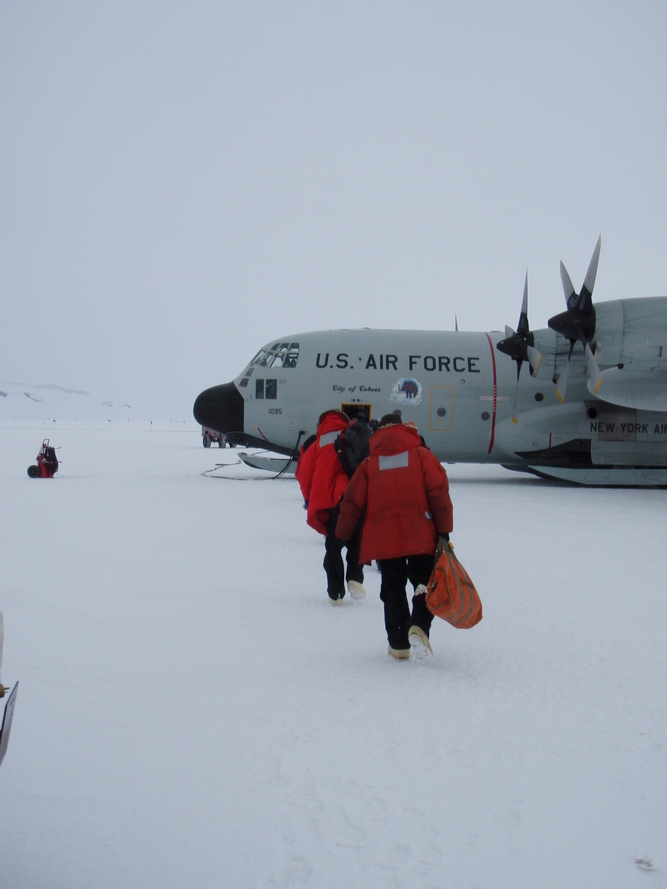
Boarding the LC-130.
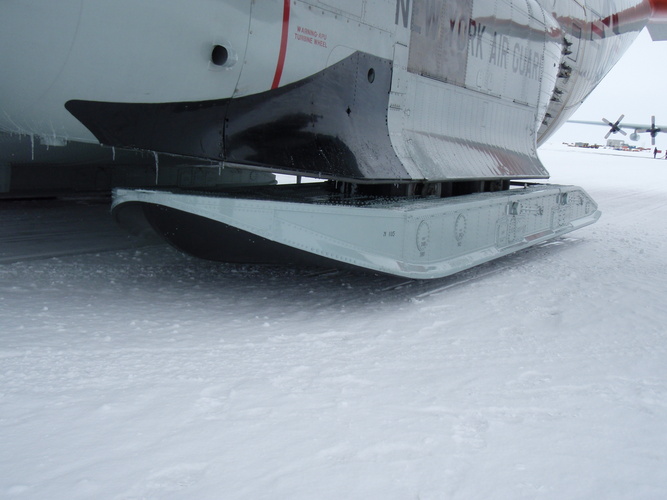
A close-up of one of the rear skiis. The skis retract until they are almost flush with the fuselage during flight, and they can also retract the skis and deploy regular wheels.
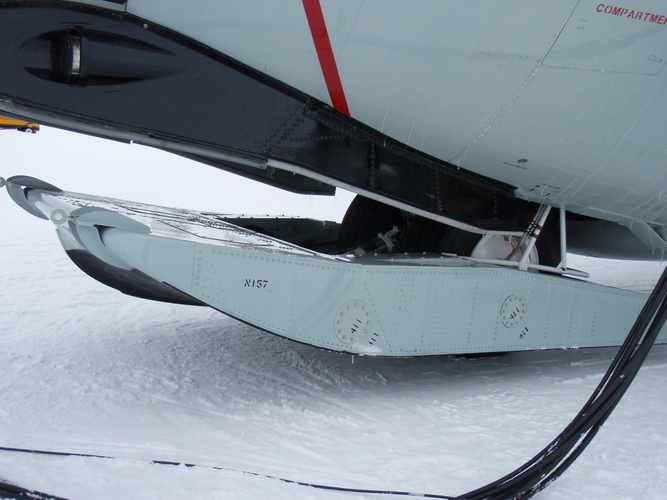
Front ski.
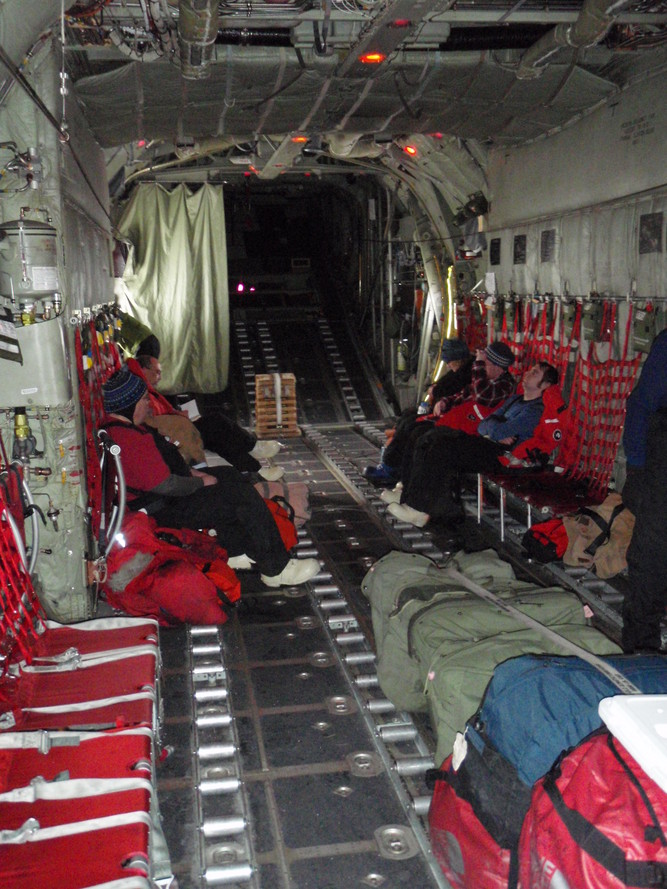
There is only enough lifting capacity for about 10 of us to go along, and we all have to sit in the middle or the back of the aircraft to ensure we can lift off. Sometimes the LC-130s have to make 2 or 3 runs before they manage to lift into the air.
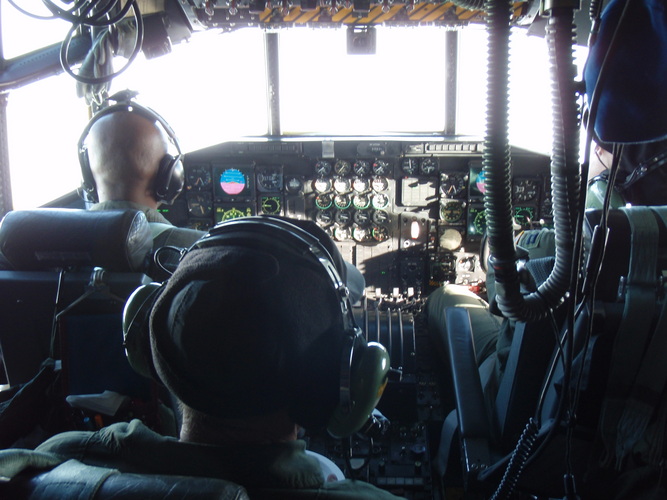
Cockpit.
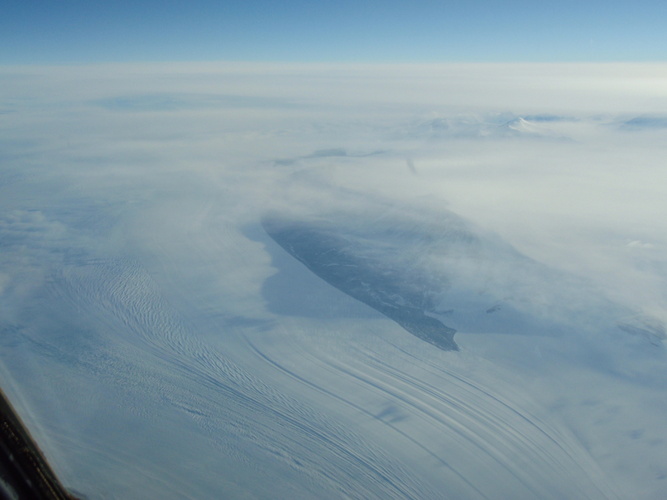
Most southbound flights will fly over the Ross Ice Shelf almost as far as they can, and then follow a glacier up between the Transantarctic mountains, the mountain range that separates the Ice Shelf from the 3,000m altitude Polar Plateau that covers the vast majority of the continent.
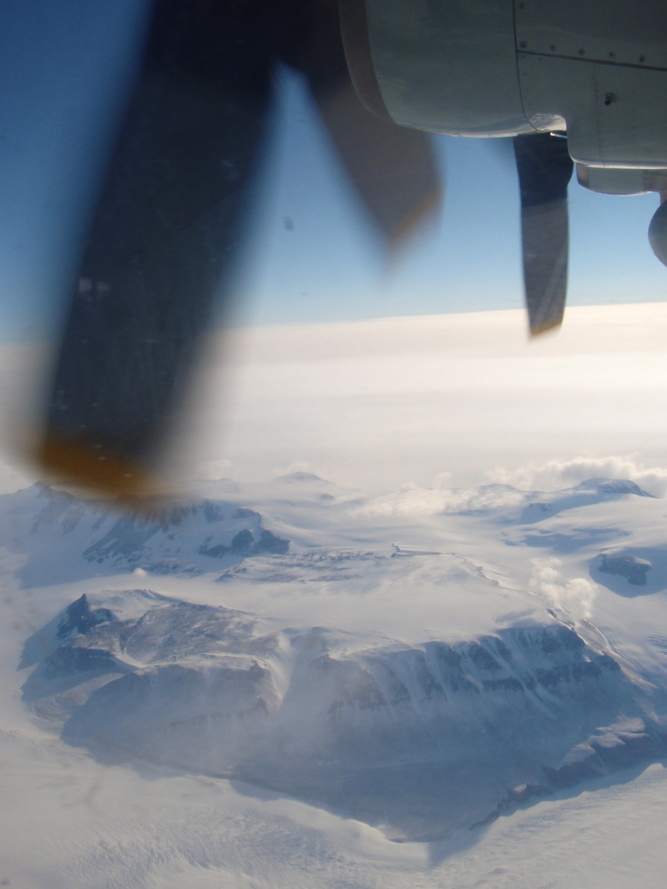
There's several small windows inside an LC-130.
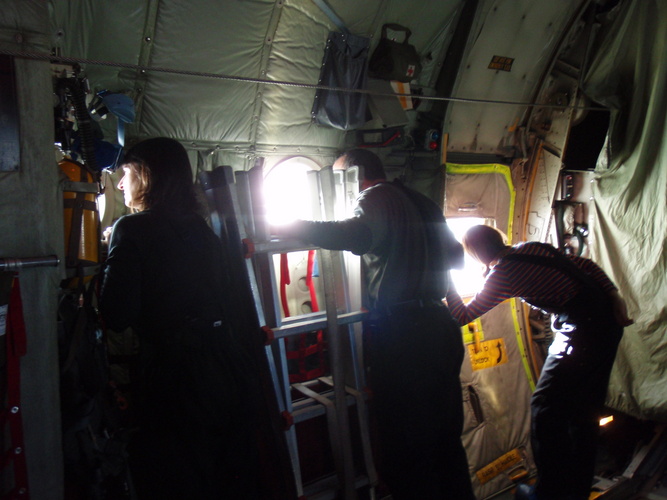
Looking out the windows.
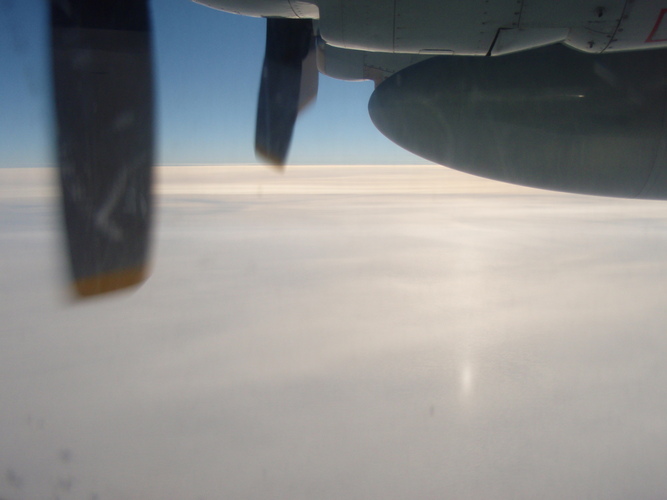
Halfway through the flight, we reached the Polar Plateau. There's not much to the Plateau, and thus not much to Antarctica as a whole, just a lot of flat snow.

Close up of the Plateau snow.
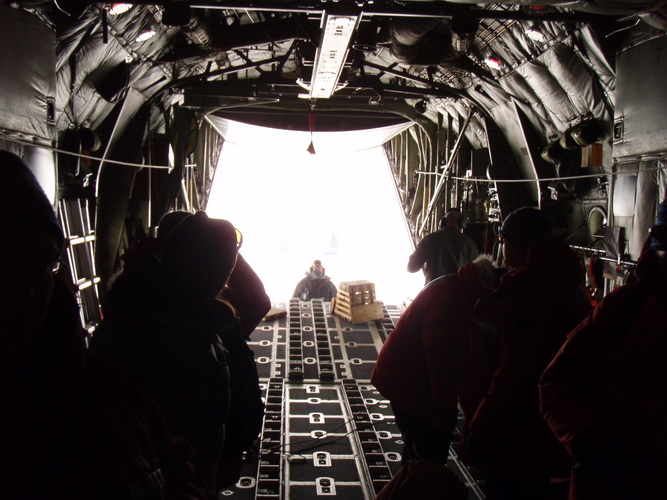
Eventually we touched down at the runway of the Scott-Amundsen South Pole Station. The runway is built of compacted snow, and the surface is only dense enough to support ski-equiped aircraft.
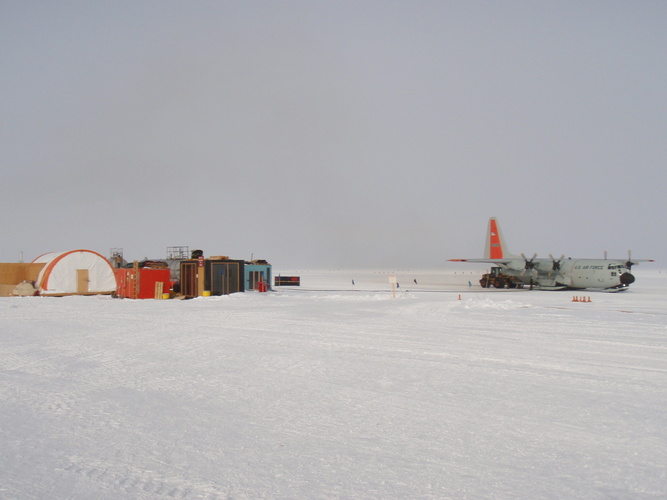
We wandered off while our aircraft began unloading fuel, through the tubing seen stretched across the snow. Cargo, probably trash, was loaded into the rear of the aircraft for transport back to McMurdo. The plane never shut down its engines, which in the -44F temperatures at the Pole that day would have risked being unable to start them back up. LC-130s are prohibited from flying to the Pole when the temp is -50F or colder, for if the plane gets stuck at the Pole due to weather and has to shut down its engines, it would have great difficulty starting them again.
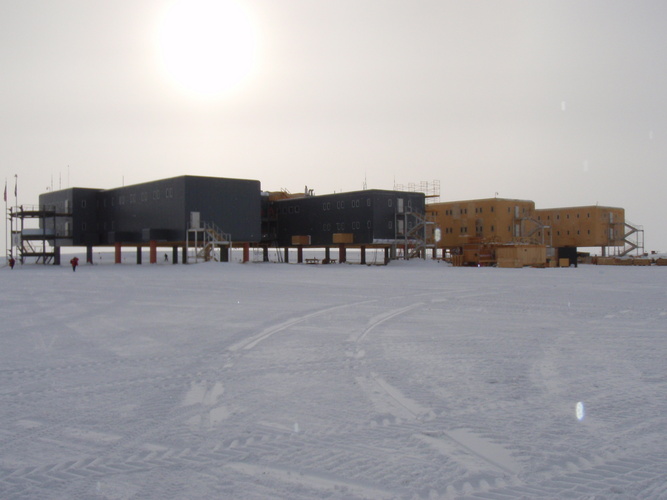
The US built the first South Pole Station in 1956-57 if memory serves, and it has been rebuilt several times. This newest Station was just dedicated this year. It's built on pilings so that snow blows underneath the building rather than piling up around the outside of the building.
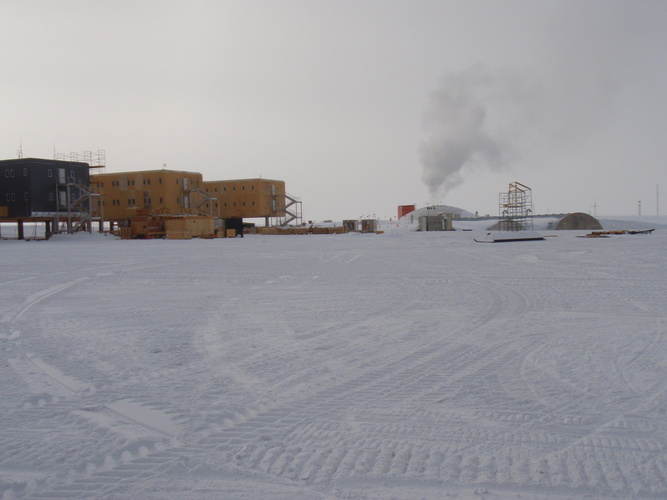
The famed South Pole dome is visible under the exhaust cloud. The dome was built in the 70s and enclosed most of the South Pole buildings for years. It used to look considerably bigger, but it has become buried in snow drifts and is scheduled for disassembly in the next few years. The exhaust cloud is coming from the power plant.
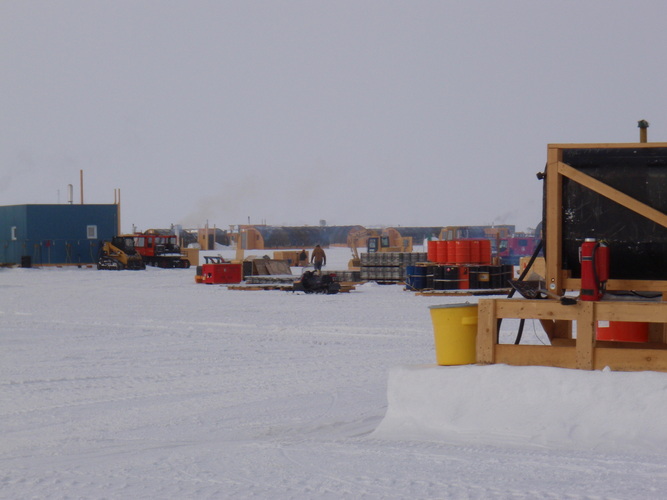
Surrounding the new station and the dome is a large cargo staging area, several small science and utility buildings, and the semi-cylindrical tent structures seen in this photo. The tents are used to house workers during the summer, when the population exceeds the capacity of the main station structure.
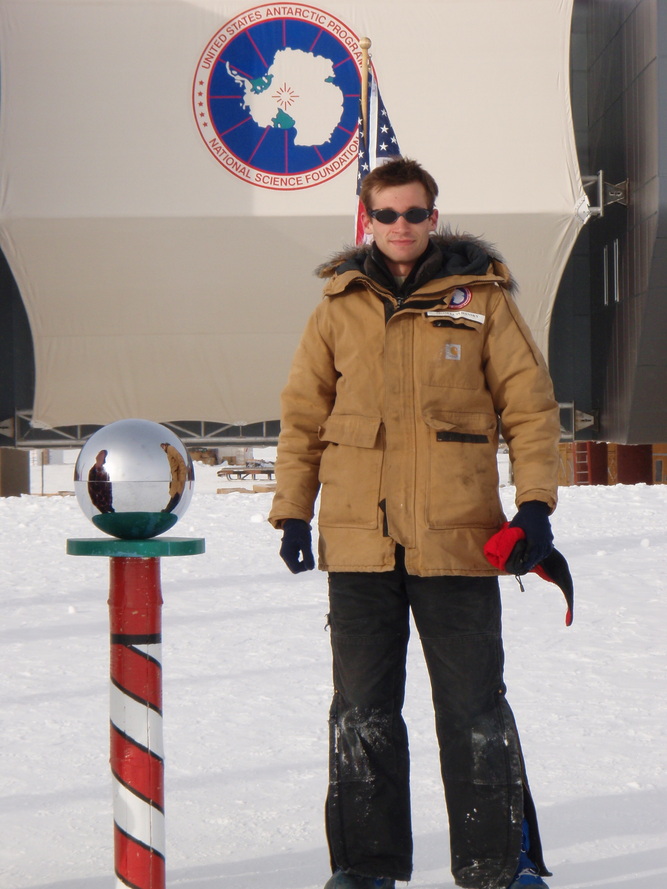
There's two poles at the South Pole Station, and here I'm seen at the Ceremonial South Pole, which is surrounded by flags and is basically there for photo opportunities. The station and the ceremonial pole are built on 9,200ft of slowly migrating snow and ice, and while the Geographic South Pole moves relative to the station, the Ceremonial South Pole (and the station) are allowed to drift with the snow and ice, because no one wants to constantly relocate all those flags (or the station). Under the 9,200ft of snow and ice is only about 100ft of bedrock above sea level.
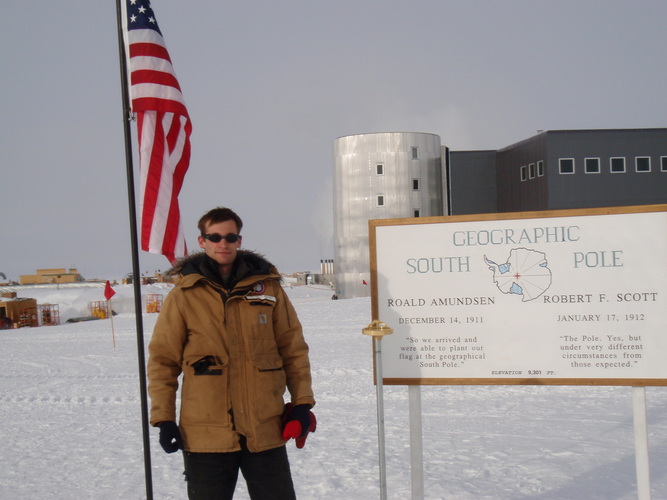
Here's a respectable photo of me at the Geographic South Pole, about 100 meters away from the Ceremonial South Pole. The Geographic South Pole marker is moved every year so that it accurately indicates the position of the Pole.
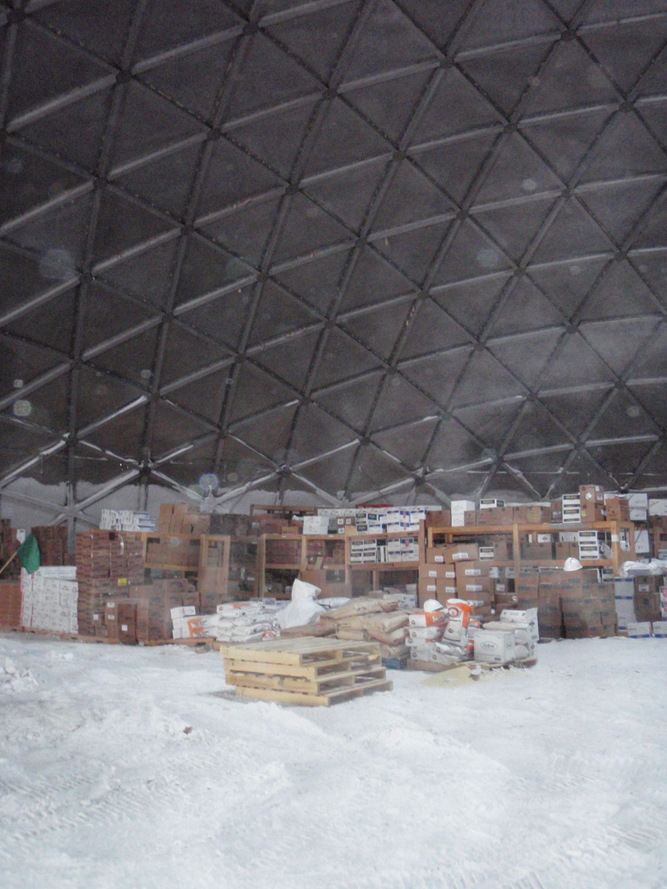
The interior of the old dome. It's used for storage now, but used to house all the residential and utility buildings at the Pole.
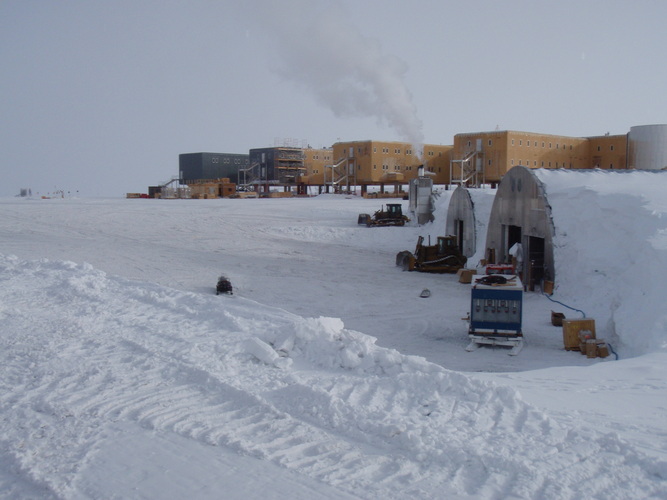
The new station is connected by tunnels to the structures seen at right which house the vehicle maintenance facility and power plant.
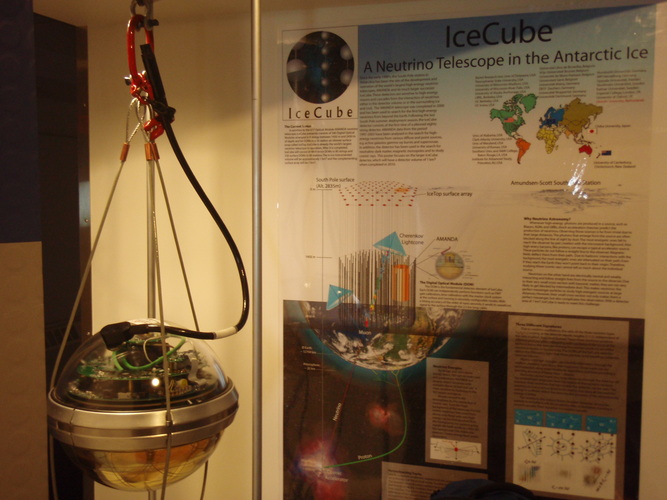
The big research project at the Pole right now is a neutrino detector array called IceCube. Shown here is one of the IceCube sensors, which will be buried deep in the ice.
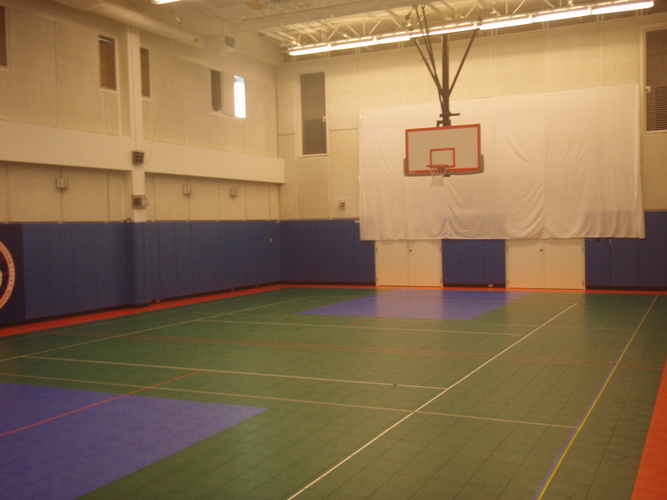
One of the four branches of the new station is a decent sized gym.
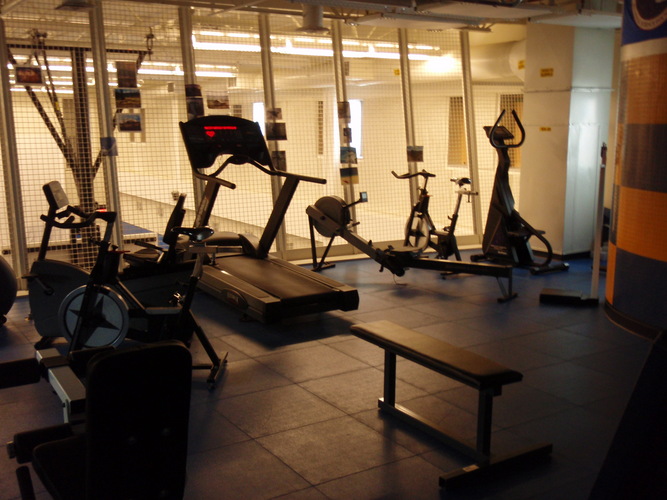
Above the gym is an exercise room.
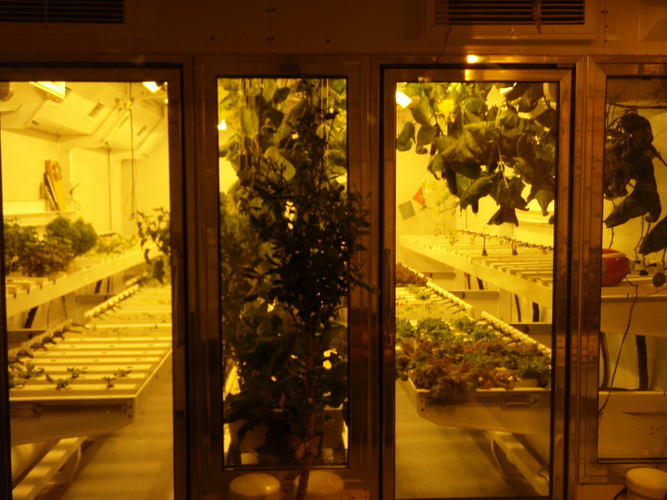
The station has a greenhouse to supply fresh vegetables year round, even in the 8 months out of the year when there are no flights to the Pole. The greenhouse at McMurdo was assembled from scraps by volunteers, but the Pole greenhouse was carefully engineered and was built integrated into the new station.
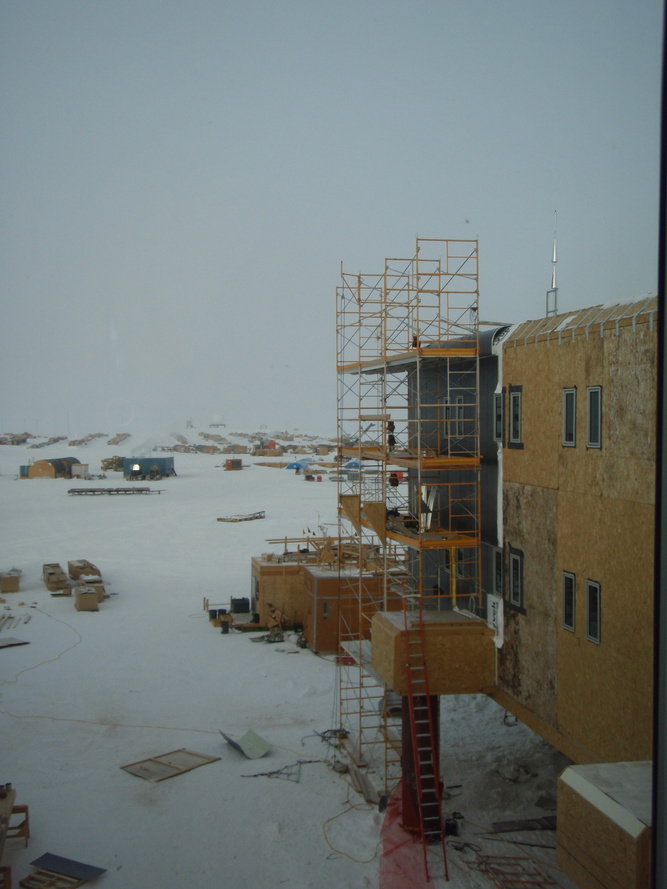
The new station dedication took place earlier this year, but construction isn't quite finished.
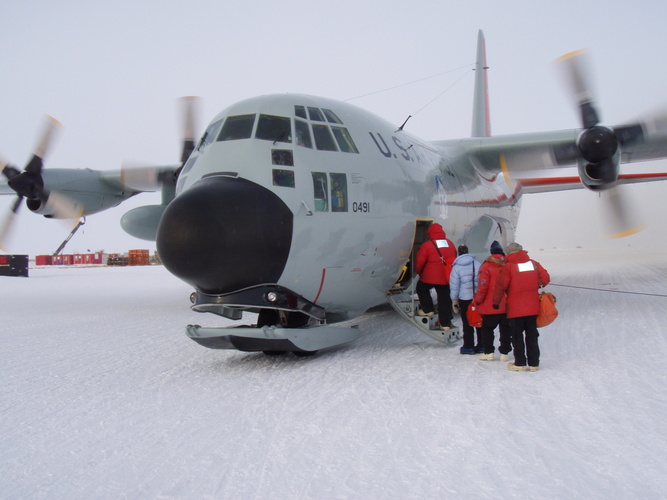
After only a couple hours of wandering around, we boarded another LC-130 for the trip back to McMurdo.
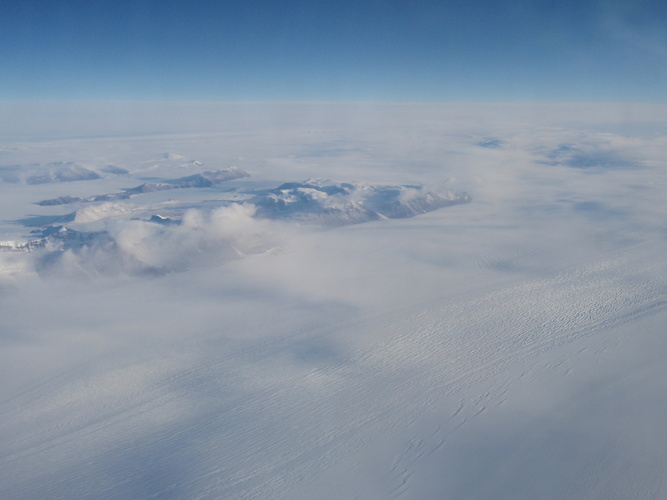
The Plateau accumulates snow which turns to ice, and oozes out across the edge of the Transantarctics like a slow waterfall.
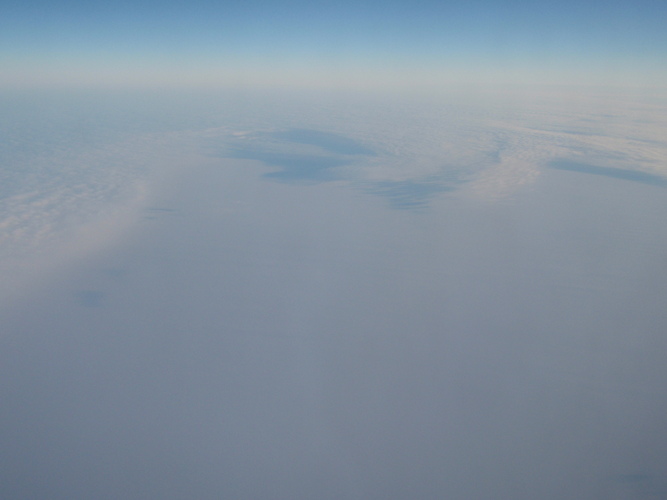
After crossing the Transantarctics, we were back over the Ross Ice Shelf.
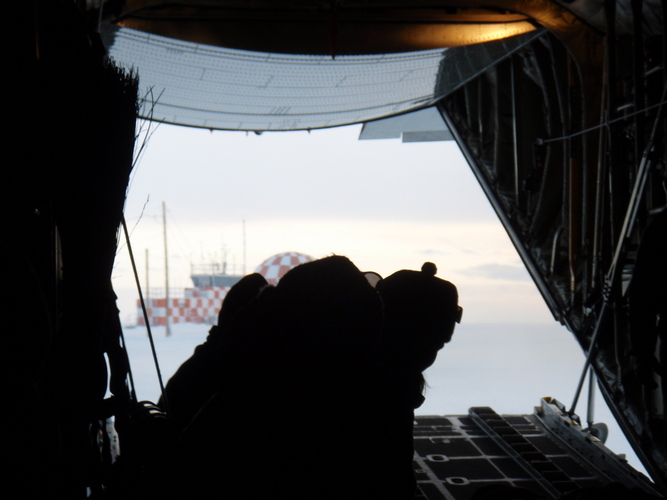
It's about a three hour flight each way, and soon we were back at McMurdo.
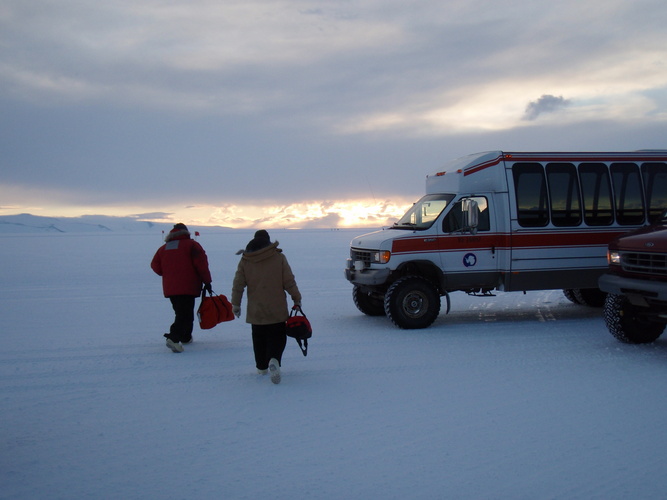
The sun wasn't going below the horizon yet, but we stepped off the plane to see one of the first sunsets since October.
Return to main page





























